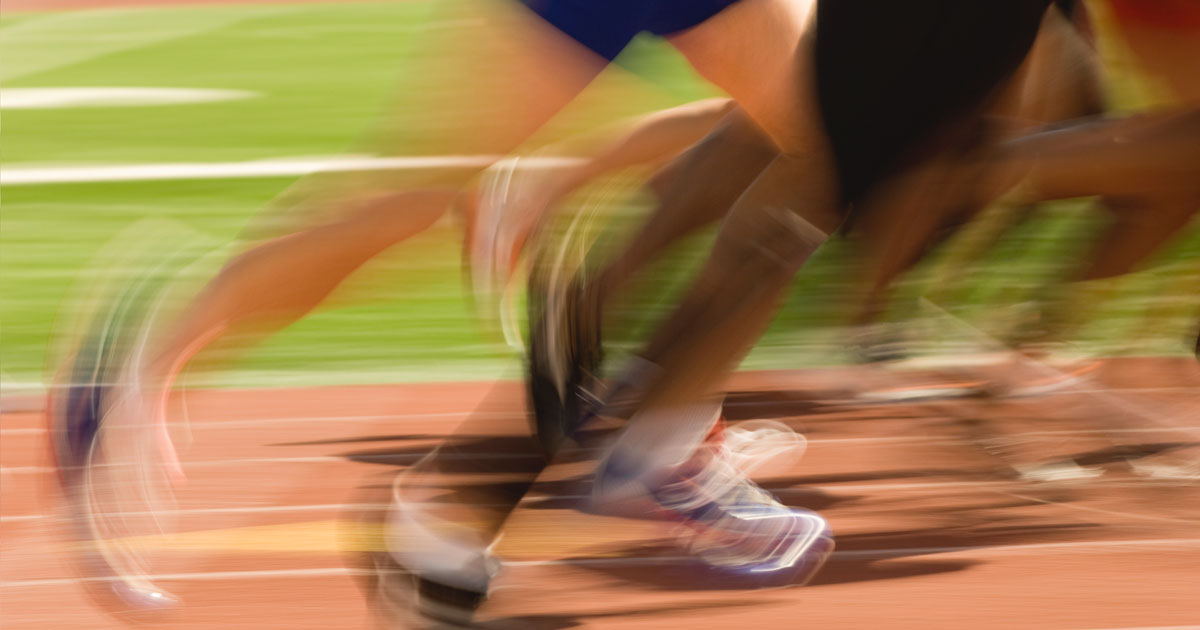
How To Buy The Right Running Shoes
Follow a few simple steps to find the perfect pair to suit you.
When you walk into a sports store you are confronted with a wall of shoes. How do you choose from these hundreds of models 'the shoe' that will suit you best? If you buy the wrong shoe you can be injured. Buying the right shoe can be the most important decision you will make to avoid injury and run faster. A salesperson that is also a runner can help you make an informed choice but there are things you can do to help too. The answers to every question in each of these seven steps are clues to help you find that perfect shoe to suit you.
Step 1: Look at your history:
Examine your footwear history. Which shoes have worked in the past and which shoes haven't? What kind of support do the ones that worked have compared to the ones that did not work? Examine your injury history. What kind of injuries have you been prone to get? What features do you need to deal with these injuries? Is your footwear contributing to the injuries?
Step 2: What are your personal characteristics?
Examine your biomechanics. Are you a pounder or do you glide across the ground? Do you strike with the heel, midfoot or forefoot? Do you pronate, supinate or not roll at all? Consider other factors. Are you currently injured to the point that it will affect your ability to test the shoes? Are you heavy or a lightweight? How long have you been running and how much running do you do? What terrain do you mainly run on?
Step 3: Examine your foot type:
Your foot type is important to consider when getting the right fit as well as the right type of support. Do you have a wide or narrow foot, a flexible or rigid foot, a high arched or flat foot? Do you have any other problems like bunions requiring special fitting and support? Many shoe models now offer different widths to accommodate for different shaped feet.
Step 4: Analyse your previous shoes:
Your previous shoes can tell you a story about what forces you exert on your shoes. The wear patterns on the sole tells you how and where you move against the ground. Any distortion in the uppers indicates where you might need the shoe to be stronger or fit better. You can tell how much life (if any) they have left, and if you have been running in them for too long. Take them in with you when you buy your next pair so that you can compare them to your new shoes.
Step 5: Avoid the obvious pitfalls:
Avoid brand loyalty. Try to find the shoes that suit you best. You may get a different brand each time but you will be buying the best shoe to suit you every time.
Beware of poor advice. What your friends liked or what top runners wear has nothing to do with your specific needs. Be sceptical of advertising claims. The shoe companies want you to buy their shoes. They will make claims that are sometimes wrong and misleading to make sure you do.
Do not just buy the first pair you try on. Try on all the shoes that may suit your needs and eliminate the ones that do not suit.
Step 6: Seek expert advice:
The best decision you can make is going to buy your shoes from a specialist running store. A salesperson at a running store will help you go through all of these steps. If you’re unsure, seek advice from a podiatrist who specialises in treating runners.
Step 7: Trying on shoes:
The final step in the process involves actually choosing the shoe. You should have an idea of what you need them for, how much you are willing to spend and how durable you want them to be.
When trying on shoes the first question to ask is do they fit? Fit is more than just if they are long enough. They must also fit the width and depth of your foot as well as any individual characteristics. There is no ideal foot shape but many different shaped shoes to suit different shaped feet. Don’t put a square peg into a round hole – a straight foot should not go into a curved-last shoe.
Do a direct comparison. Try a different shoe on each foot to directly compare one model to another.
RUN IN THE SHOES!
Trying the shoes on and walking around on the carpet will help you buy a shoe that is good for walking around on carpet. You must have a run in the shoes on a surface and at the speed that you want to use them. The sales person should watch you running and be able to pick up any obvious problems or lack of support.
Listen to your feet. The amount and kind of noise you are making tells you about how the shoe suits your biomechanics. If you are making a slapping noise then there is likely to be a problem. Excessive noise indicates excessive shock.
The shoes should feel like they are supporting you evenly on both sides of your foot. There should be a smooth transition from heel-strike through to toe-off. Stability is much more important than cushioning, and cushioning is not softness.
These steps are only a guide for you to use when choosing your next pair of shoes. Some factors will be more important than others to different people. Even if you do not understand the implications of every factor discussed you should still be able to use these steps to help find that perfect shoe.
